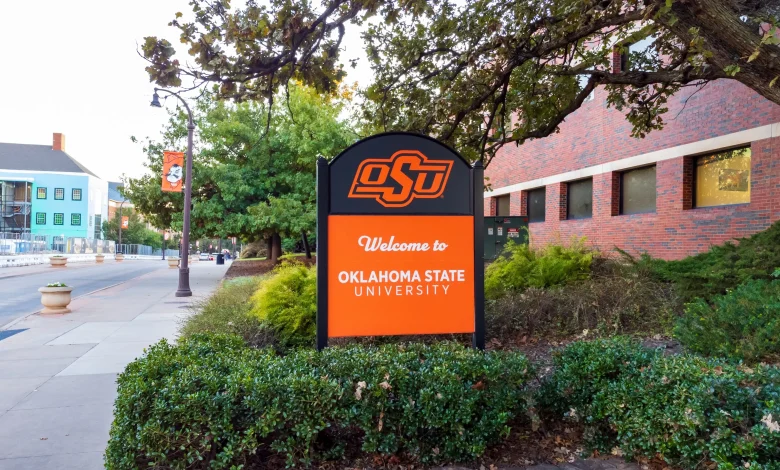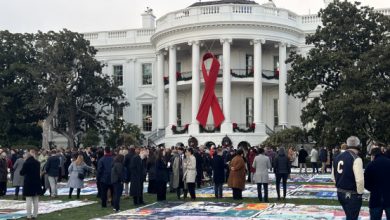Tragedy Strikes Oklahoma State University: Several Injured in Campus Shooting

On the early morning of Sunday, October 19, 2025, the campus of Oklahoma State University (OSU) in Stillwater was jolted by gunfire, shattering the calm of what had been a celebratory weekend. The incident — which took place around 3:40 a.m. at the Carreker East residential hall — left at least three individuals wounded, including one student, and triggered an investigation by university and local law enforcement.
A Violent Awakening in the Early Morning Hours
The sequence of events began when officers from the OSU Police Department responded to reports of a shooting and a collapse at a nearby McDonald’s in the early hours of Sunday. According to the OSU announcement, at approximately 3:40 a.m., police were notified of victims who arrived at off-campus locations after the incident. The actual site of the shooting was determined to be the Carreker East residential hall on the university campus.
Investigators say a large, private party had taken place off-campus earlier that night. Some of the attendees later moved to the Carreker East area, where a disagreement between several individuals escalated, eventually culminating in gunfire. According to the OSUPD Chief Michael Beckner, the shooting began in an outdoor hallway or breezeway of the residence hall, spilled into the parking lot and then onto a nearby street.
At least three people were struck by bullets, one of whom has been confirmed to be a student at OSU. The victims were transported to hospitals in Oklahoma City and Tulsa for treatment. Two of the victims required surgery and remain hospitalized in stable condition, while the third has been released.
Location & Context: A Dorm, a Party and a Homecoming Weekend
The residence hall in question, Carreker East, is located on McElroy Road on OSU’s campus in Stillwater. October is home to OSU’s famous “Sea of Orange” homecoming celebration, a time when tens of thousands of alumni, families and students flood the campus and the town for pep rallies, the parade and the football game. The shooting occurred against this backdrop of festivity, making the incident all the more stark.
Because the incident followed an off-campus private party, it raised questions about how large gatherings and social events intersect with campus safety — particularly late at night when supervision and security may be reduced. Campus police maintain that there is no ongoing threat to the campus.
Impacted Individuals: Victims, Community, Fear
Although the identities of the victims have not been publicly released, university officials confirmed that one injured party is a student, and others are non-students. While none of the injuries are believed to be life-threatening at this time, the emotional and psychological impact on the campus community is profound.
Students living in the residence hall and nearby buildings spoke of hearing multiple gunshots, seeing people running, and being directed by campus security to shelter in place or avoid the area. The sense of safety that many associate with their campus home was suddenly disrupted.
Beyond the immediate victims, the incident reverberates across the broader campus community. Students arriving for homecoming tailgates and activities found themselves watching a developing law-enforcement scene. Alumni and families visiting for the weekend faced the unsettling realization that even during celebration, violence can intrude.
Institutional Response: Safety Protocols & Reassurance
In the immediate aftermath, OSU issued a public safety announcement: the campus was secured, the suspect was no longer on campus, and students not residing in Carreker East were advised to avoid that area pending investigation. The OSU Police Department, in coordination with the Oklahoma State Bureau of Investigation (OSBI) and the city of Stillwater Police Department, is conducting the investigation.
The university also emphasized availability of mental health and counseling resources for students affected by the traumatic event.
Governor Kevin Stitt and other state officials offered public statements of support, noting the swift response by law enforcement and reiterating that the campus remains safe.
A Broader Conversation on Campus Safety
While this event at OSU is thankfully not among the deadliest in terms of casualties, it nonetheless underscores the persistent vulnerability of college campuses to acts of violence. Dormitories, off-campus gatherings, large social events, and late-night hours create a confluence of factors that can heighten risk.
Colleges across the country have long wrestled with balancing vibrant student life — including large parties, athletics, alumni events and nightlife — against the necessary safety protocols: designated security patrols, substance-use policies, guest registration, emergency response planning and rapid communication systems.
In OSU’s case, the fact that the shooting appears to have followed a private off-campus party raises as many questions as it does answers:
- How were the off-campus gathering and its attendees monitored?
- What prompted the disagreement that escalated into gunfire?
- How quickly did the shooting migrate from the off-campus site to the dorm hallway, parking lot and street?
- How did victims reach off-campus locations before contacting campus police?
The institution’s statement that “this was isolated and there is no ongoing threat” is intended to reassure. However, for students, parents and staff, the incident likely raises fresh questions about situational awareness, personal safety, bystander training, and the responsibilities of both the institution and the student body.
Historical Echoes: OSU’s Past Tragedy
This is not the first time OSU has had to confront violence during its homecoming celebrations. A decade ago, in 2015, OSU suffered a tragic incident when a vehicle intentionally drove into the homecoming parade, killing four and injuring 47. While that was a vehicular attack rather than a shooting, the trauma it inflicted on the campus and local community remains fresh in institutional memory.
The recurrence of serious incidents during large-scale community events underscores how vulnerabilities can surface when thousands of alumni, families, students and visitors converge on campus. It emphasizes the importance of proactive risk mitigation, crowd management, security coordination, and timely communication.
What Helps in the Aftermath — Support, Investigation, Prevention
In the wake of this event at OSU, there are several areas of focus:
- Support for Victims and Community
- Ensuring that the injured receive full medical care and follow-up support.
- Making counseling and mental-health services widely available, including to indirect victims: roommates, friends, bystanders and staff.
- Facilitating forums for students and families to talk through the trauma, ask questions, and regain a sense of safety.
- Transparent Investigation & Communication
- Providing updates on the investigation: any arrests, motive, timeline, weapon used, whether the shooter was affiliated with the university.
- Offering clear communication about how the incident occurred, what security responses were activated, and lessons learned.
- Encouraging the campus community to participate (via tip-lines, apps such as Rave Guardian, etc.) — OSU has explicitly invited info from the public.
- Reviewing and Strengthening Safety Protocols
- Evaluating how off-campus events tie back to dorm residences in terms of supervision and student behavior.
- Examining the physical layout of the dormitory: entrances/exits, breezeways, parking lot access, lighting, surveillance. The fact the shooting began in an exterior breezeway and parking lot implies vulnerabilities.
- Ensuring timely campus alerts, lockdown procedures, and that students know where to go or how to shelter in case of active threat.
- Re-assessing the role of social gatherings during high-traffic weekends (homecoming) and whether additional security or guest‐registration measures are necessary.
- Cultivating a Culture of Shared Responsibility
- Educating students about bystander responsibility, conflict de-escalation, and the risks of large parties where alcohol or other substances may be involved.
- Engaging fraternity/sorority organizations, residential life staff, campus safety teams and student leaders in proactive safety planning.
- Reinforcing that student safety is a community endeavor — especially during high‐energy events such as major athletics weekends.
Looking Ahead: Healing and Vigilance
As OSU works to stabilize the immediate situation and support the injured, the larger task will be helping the campus community heal. Students may return to classes, continue tailgate traditions, and engage in university life — but the memory of the gunshots and the rush of the police response will linger.
Campus leadership needs to strike a balance between assuring the community that the environment is safe and recognizing that trust takes time to rebuild. For some students, merely sleeping behind closed doors and locked dormitory entrances will no longer feel sufficient.
In parallel, the incident serves as a stark reminder that no campus is immune to the risk of violence — even those with long traditions of safety and strong student engagement. The weapons, motivations and settings may vary, but the consequences are personal, immediate and indelible for those involved.
Final Thoughts
The shooting at Oklahoma State University early on October 19, 2025, is a painful event for the university, the city of Stillwater, and all who consider campus life a sheltered realm of learning and community. Though only three persons were injured and, so far, no fatalities have been reported, the implications ripple far beyond these numbers.
It is a moment for grief, but also a moment for examination: how did this happen? What might have prevented it? And how do we ensure that the joy of homecoming and the vibrancy of campus life can persist without compromising safety?
As OSU continues its investigation, supports its students, and refines its safety protocols, it is worth remembering that such incidents also illuminate the strength of community: how students, faculty, families and administrators respond together. Because healing is not just medical or institutional — it is communal.
For now, the message from OSU remains: the campus is safe, the suspect is not believed to be on campus, and the investigation is ongoing. Yet under the surface, the sense of normalcy for the coming days and weeks will require conscious work — from every member of the Cowboy family.




